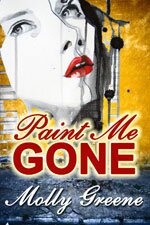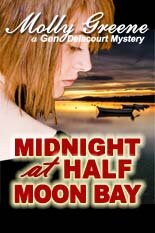by Victoria Grefer
Bloggers are always seeking two things: to generate traffic to their blogs, and then to generate further action once people have gone there. That might be an e-book purchase. It might be signing up to an email list. It might be a Twitter follow or Facebook “like.” We often sit there, struggling to find ways to convince people to take that next step, and we forget the most obvious solution to the problem:
Let them know that they can further engage you and your work.
Give them a call to action! I saw a definite jump in hits per visitor and numbers of new followers when I started writing “calls.”
Still, what does it take to send out a successful call to action, as an author-blogger or any other kind of blogger? There’s a lot to consider. I don’t know that there’s such a thing as the “perfect” call to action, but there are definitely some tips I can give you to increase your chances of raising interest (or at the very least, not annoying your visitors. After all, that’s the last thing any blogger wants!)
- Don’t make things difficult for your visitors. In other words, do as much of the work for them as you can. When you invite them to check out something else, provide a link to that location. Let them know where on your site they can find more information about you; don’t make them hunt. It’s hard to keep someone’s attention online, and if you’re inviting them to go to Google, they won’t make it from there to your final destination.
- Your call to action should be related to the content of your post. Let’s say my current draft is a post about character development. I might include a call to action inviting readers interested in characterization to check out my character category, where all my posts related to that topic are grouped for easy access. If your post really interested or helped somebody, you’re offering additional support. That’s being helpful, not intrusive. And it’s reasonable to provide readers a voluntary but logical “next step.” When your call to action is related to your post’s content, it won’t bother people who don’t have the time or inclination to follow up on your invitation. Speaking of which:
- You call is an invitation, not an order. Maybe some people will think differently than I do, claiming that strong wording and a confident tone inspire readers to act. Personally I try not to order people around because I resent being told what to do. I craft my calls to action so that they come across as invitations. I don’t want to imply that I expect people to take the next step or that I look down on those who don’t. That’s key: your call is all about the reader, not about you. You don’t want to make yourself a factor in the follow-through.
- If you’d like comments on your post, an indirect call to action will inspire people to share their thoughts. You don’t have to openly invite your readers to peruse and add to the comment section. As the blogger, you know what kind of insight you’re hoping your readers can provide you and each other. (I have learned more than I could possibly say from discussions sparked by my blog’s community). You should be able to identify a discussion question or two related to your post’s content. So ask the question. That counts as an invitation, and your readers will respond, hopefully (and rightfully) feeling good about giving back and contributing something to add to the expertise and experience you’ve shared with them.
- It’s not about you benefiting from those who heed the call. You will benefit, of course. But blogging isn’t about the blogger; it’s about community, and your calls to action should draw attention to how you can help your community by giving them more. If not, you should be inviting readers to share your post with others, so that a larger range of people can benefit. To paraphrase JFK: “Ask not what your readers can do for you. Ask what you can do for your readers.”
- Remember, your call to action can take many forms: You can craft calls to comment, to join a list serv, to share your post on social media, to explore other content on your blog, to download an ebook that’s free or on sale. Go back and forth between these, and don’t feel as though you need to include every kind of call on every post. You don’t.
- Sometimes, all you need to provide is a “related posts” list at the bottom. I’ve taken to doing this, and it’s proven effective to some degree. In my case, I publish daily on my blog, so people don’t always get to see every post when it’s new. Also, there are always new people dropping by for the first time. Linking to these posts in a list, sans long and obnoxious introduction, gives easy access to relevant material (remember how that matters?) for those who might want it. For those who don’t, it’s easy enough to ignore because it’s at the bottom and doesn’t interrupt the flow of the article.
 Victoria Grefer is the author of the Herezoth trilogy (sword and sorcery fantasy) as well as the writer’s handbook Writing for You: A Novelist’s Guide to the Craft of Fiction. She is from New Orleans, LA.
Victoria Grefer is the author of the Herezoth trilogy (sword and sorcery fantasy) as well as the writer’s handbook Writing for You: A Novelist’s Guide to the Craft of Fiction. She is from New Orleans, LA.
Note from Molly: Check out my novels on Amazon, join my Reader’s Club for freebies and book news, and follow me on Twitter. This original content is copyright protected. Thank you so much. Mwah!












Comments are closed.